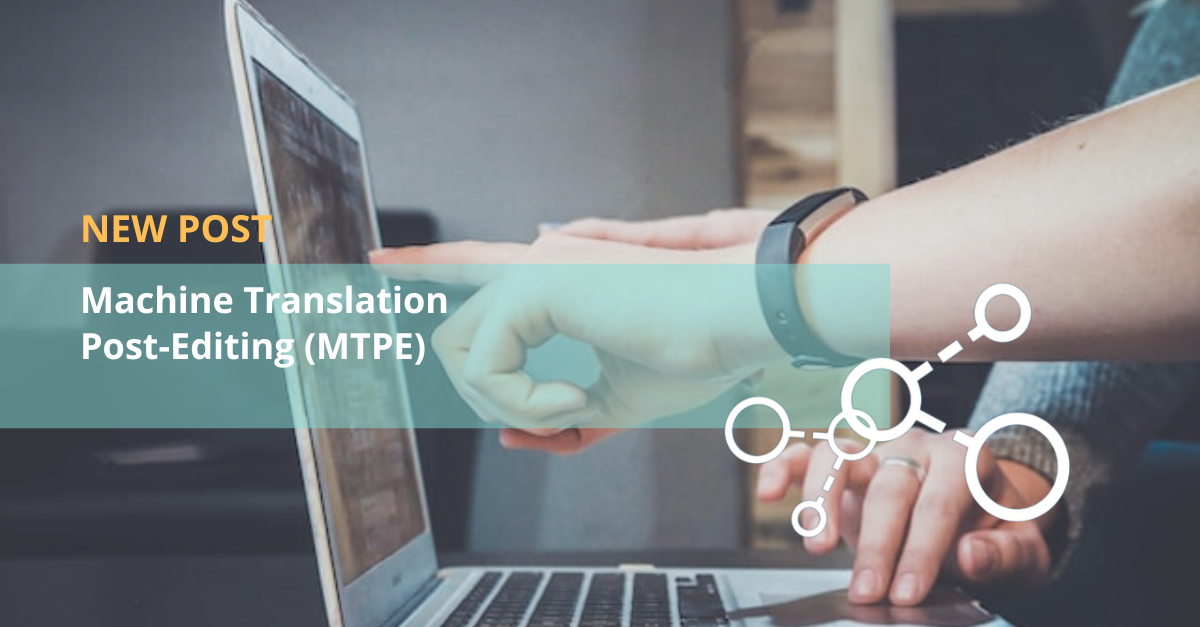Any 21st-century international company needs first-class translation and post-editing services. In order to ensure that you communicate effectively with global users and consumers, you need to know that you have accurate, high-quality translations. Translation will be needed for all of your content, from your website to the digital chatbot that provides customer service.
Each channel could have a different strategy, though:
Machine translation can be perfectly fine for chatbot generated content or in some support cases. Machine translation post-editing may be better for user-facing content. In this world where more and more content is constantly being published, how can you translate efficiently and effectively?
As machine translation technology continues to improve, your company may face many choices for balancing the triple demands of speed, quality, and cost-effectiveness.
Machine translation and human translation
Machine translation produces lightning-fast translations, and that is precisely what our solutions do in a private cloud. You can customize engines for your applications and have them translate thousands of documents with near-human quality. But generally speaking, MT may lack the fine quality and professional assurance of human translation. Getting genders wrong is a known drawback of neural machine translation.
So, when you need more than fast machine translation, what should you do?
Machine translation post-editing (MTPE) by a human translator, although not as fast as the original machine translation, can make your content more refined and add that "human touch" after the machine output.
How do you know when you can get away with pure machine translation and when machine translation plus post-editing is your best choice?
Keep Reading: What is the difference between machine learning and deep learning?
2 levels of machine translation post-editing
Let’s start by saying that MTPE has nothing to do with proofreading or the quality review that normally takes place after a translator has completed his or her assignment.
Whilst there are no levels in translation, but rather "workflows" including terminology control, fluency and adequacy, deep, light or no proofreading, there are 2 levels of machine translation post-editing.
Importantly, no level of machine translation post-editing requires the creativity of, let’s say, transcreation. In spite of all the articles written on the subject and a brand-new ISO standard on Post-Editing, with which Pangeanic is certified, the most accurate definition of post-editing comes from the 2010 TAUS Post-editing in Practice report: “Post-editing is the process of improving a machine-generated translation with minimal manual labor.”
The keywords in this definition are “minimal manual labor.” Traditional proofreading or revision is based on a comparative analysis of the source and the target texts. It requires the linguist to have a deep knowledge of both languages and check and edit terminology, style, and grammar.
MTPE, on the other hand, is characterized by higher productivity and its limited cognitive bilingual effort. The translation work has been done, and it is of increasingly high quality. Academia has been claiming to be on par with translations produced by humans, or at least to be indistinguishable from them for some time.
The work of post-editors focuses on more mechanical errors, like capitalization and punctuation, gender and terminology inconsistencies, unnatural expressions or grammar errors. In many cases, the errors in translation are due to the poor quality of the original (typos, scanned copies through OCR, etc.).
A post-editor is not expected to rewrite entire sentences (unless the machine output is obvious nonsense), so they should only amend what’s necessary to make a sentence clearer to the reader. Remember what to expect in the 2 levels of machine translation post-editing:
Light Post-Editing
A human translator edits machine translated suggestions, correcting only the most serious errors that may "hurt the eye."- Correct only the most obvious punctuation and capitalization errors
- Partially rewrite confusing sentences
- Fix gross machine-induced mistakes
Full Post-Editing
The final text should be ready for publication and indistinguishable from a human translation. It may deviate greatly from the machine output in word order or expressions. As well as the 3 typical checks of light post-editing, the following should also be carried out:- Delete unnecessary or extra translation alternatives generated by the machine
- Make key terminology consistent, applying terminology lists
- Use a post-editing tool or CAT tool as a post-editing tool
Can a proofreader or translator be a post-editor?
The skills that distinguish a good translator and a proofreader from a post-editor are: A proofreader must have a deep knowledge of both source and target languages, and sometimes of translation technologies and techniques. Typically, translators and proofreaders specialize in one field of knowledge, a specific domain.
A post-editor, on the other hand, may even be monolingual or just have a working knowledge of the source language. Except in very defined circumstances, like jargon (social media, slang, situational humor, etc.), where MT does lack the world knowledge, translations by current neural MT do not contain badly translated segments or misunderstandings. Post-editors, though, must have a strong knowledge of the target language and of the specific domain, and, ideally, an idea of how machine translation works.
Learn more: The Advantages of Translation Services




